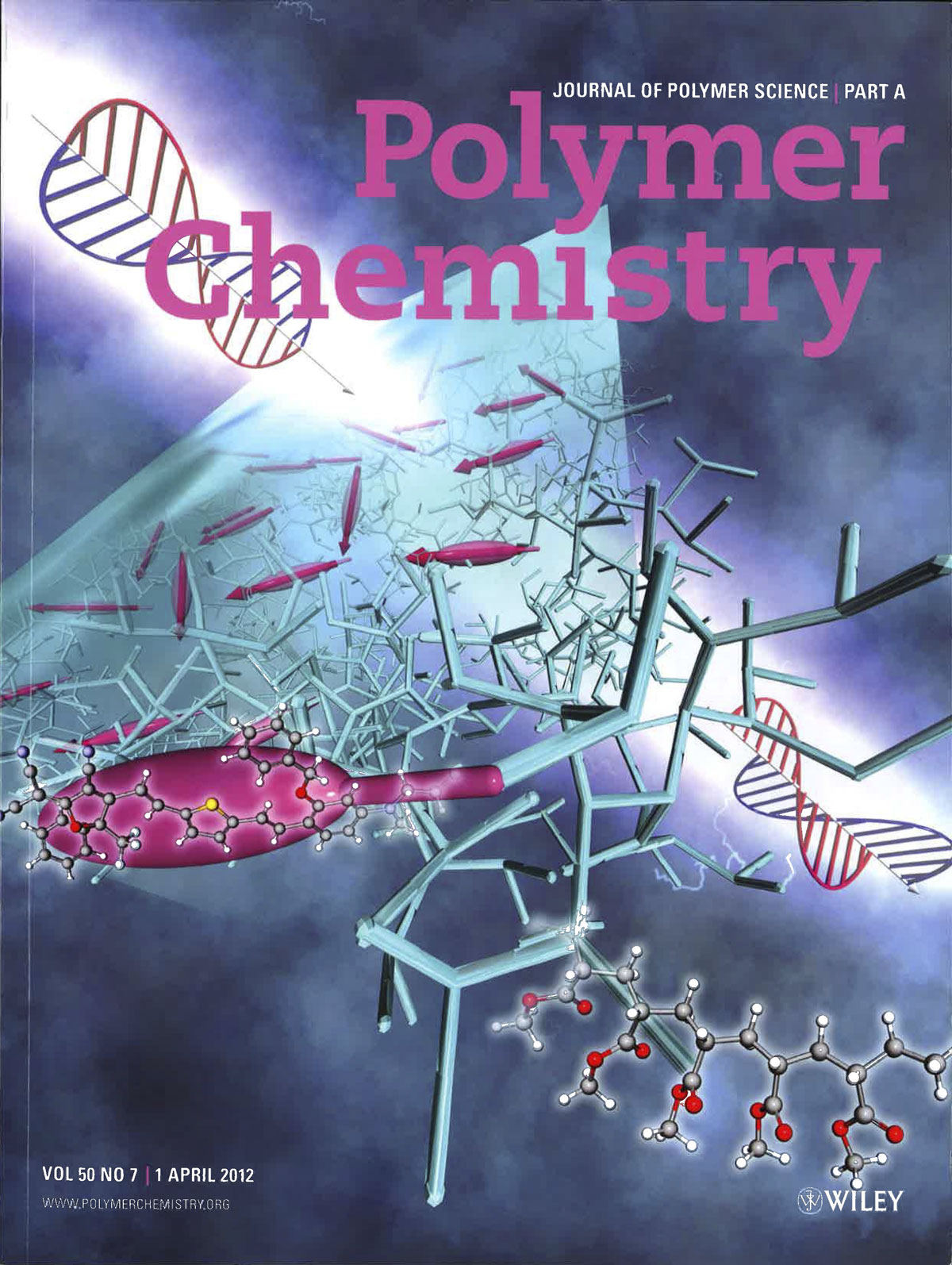|
Large electro-optic activity and enhanced temporal stability of methacrylate-based crosslinking hyperbranched nonlinear optical polymer Yuichi Mori, Kosei Nakaya, Xianqing Piao, Kazuhiro Yamamoto, Akira Otomo, Shiyoshi Yokoyama A methacrylate-based crosslinking hyperbranced polymers have been synthesized through initiator-fragment incorporation radical polymerization and used for the temperature stable electro-optic (EO) polymer application. This polymer consists of methyl methacrylate, 2-metacryloxyethyl isocyanate, and ethylene glycol dimethacrylate (EGDMA) monomers. The use of EGDMA as a bifunctional unit resulted in the solvent-soluble crosslinking hyperbranched chain, so that the EO polymer enhanced glass transition temperatures. A phenyl vinylene thiophene vinylene bridge nonlinear optical chromophore was attached to the polymer backbone as the side-chain by a post-functionalization reaction. The loading concentration of the chromophore was varied between 30 and 50 wt % by simply changing the mixing ratio of the precursor polymer to the chromophore. The synthesized EO polymers produced optical quality films with a light propagation loss of 0.61 dB/cm in a slab waveguide at 1.31 μm. The electrically poled film had an EO coefficient (r33) of 139 pm/V at 1.31 μm. The EO crosslinking hyperbranced polymer had a high-glass transition temperature of 170 °C, and exhibited excellent temporal stability of the EO activity at 85 °C for 500 h. (c)2012 Wiley Periodicals, Inc. J Polym Sci Part A: Polym Chem, 2012 Cover Image  doi:10.1002/pola.25915 |